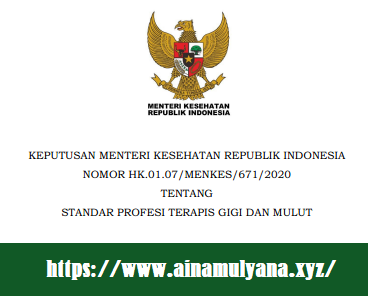Market Overview
The smart workplace market industry is projected to grow from USD 20.523 Billion in 2023 to USD 64.103 Billion by 2032, exhibiting a compound annual growth rate (CAGR) of 15.30% during the forecast period (2023 - 2032).
Smart workplaces are one of the hottest topics on the market right now, with the shifting landscape affecting almost every element of urban life. Smart workspaces are one of the sophisticated pleasures for modern corporations and multinational corporations in the age of AI and IoT. The goal of a smart workplace is to provide employees with a next-generation experience that is both efficient and cost-effective. The term smart workplace refers to a wide range of innovative solutions. Smart and fast communication systems, energy management functions, smart lights, security capabilities, centralized advanced heating and temperature control, and other features may be included in the package.
Request Free Sample Report @ https://www.marketresearchfuture.com/sample_request/4465
Market Segmentation
Based on the software services, the market is segmented into Managed software services, Consulting software services, Installation, and Support Services.
Based on the lighting products, the market is segmented into Sensors, LED, Switches, Gateways, and Others.
Based on the security systems, the market is segmented into Access control, Surveillance Fire, Break-in, Safety controls.
Based on energy management, the market is segmented into Smart Thermostats, In-house displays, Smart plugs, and Others.
Based on temperature control, the market is segmented into Temperature sensors, Humidity sensors, Occupancy sensors, and Others.
Based on the office type, the market is segmented into Retro offices, New buildings
Based on the technology, the market is segmented into Wired (i.e., Wi-Fi, Bluetooth, ZigBee, etc) and Wireless (i.e., POE, LonWorks, PLC, DALI, etc).
Based on the Region, the market is segmented into North America, Europe, Asia-Pacific, South America, Middle-East, and Africa.
Top Key Players:
The well-known players in smart workplace market are Schneider Electric SA (France), Lutron Electronics Co. Inc. (U.S.), Johnson Controls International PLC (Ireland), ABB Ltd. (Switzerland), United Technologies Corporation (U.S.), Siemens AG (Germany), Cisco Systems, Inc. (U.S.), Crestron Electronics, Inc. (U.S.), Philips Lighting Holding B.V. (Netherlands), Honeywell International Inc. (U.S.), among others.
Introduction:
In today's rapidly evolving business landscape, organizations are constantly seeking innovative ways to enhance productivity, efficiency, and employee satisfaction. The advent of cutting-edge technologies has given rise to the concept of smart workplaces, where interconnected systems and intelligent devices collaborate to create an intelligent and immersive work environment.
Unleashing the Power of Connectivity:
The smart workplace is built on the foundation of connectivity. By integrating various technologies such as the Internet of Things (IoT), artificial intelligence (AI), and cloud computing, companies can create an interconnected ecosystem that seamlessly blends physical and digital elements. This connectivity empowers organizations to gather and analyze real-time data, enabling informed decision-making, efficient resource allocation, and streamlined operations.
Enhancing Efficiency and Productivity:
One of the key advantages of a smart workplace is its ability to boost efficiency and productivity. Through automation and intelligent systems, routine tasks can be automated, freeing up valuable time and resources for more strategic endeavors. For instance, smart lighting and environmental controls can optimize energy consumption based on occupancy and natural lighting conditions, leading to significant cost savings. Moreover, AI-powered virtual assistants can assist employees in managing their schedules, organizing tasks, and providing timely reminders.
Creating a Seamless and Engaging User Experience:
A smart workplace is designed to enhance the user experience and create a more engaging work environment. For instance, smart meeting rooms equipped with advanced audio-visual systems and collaboration tools enable seamless communication and productive discussions, regardless of the participants' physical location. Smart access control systems eliminate the need for traditional keycards, allowing employees to enter the premises using their smartphones or wearable devices. These technologies not only enhance convenience but also foster a sense of belonging and collaboration among team members.
Promoting Employee Health and Well-being:
Employee well-being and satisfaction play a crucial role in organizational success. Smart workplace solutions can contribute to a healthier work environment by monitoring factors such as air quality, temperature, and lighting levels. By creating optimal conditions, companies can enhance employee comfort, reduce stress levels, and improve overall well-being. Additionally, smart wearable devices can provide personalized health insights, encouraging individuals to adopt healthier lifestyles and maintain a work-life balance.
Driving Sustainability and Green Initiatives:
As environmental concerns take center stage, organizations are increasingly focusing on sustainability and green practices. Smart workplaces can contribute to these efforts by optimizing resource utilization and reducing waste. For instance, sensors can monitor energy consumption and identify areas of inefficiency, enabling organizations to implement energy-saving measures. Smart waste management systems can automate waste segregation and recycling processes, minimizing the environmental footprint. By adopting such practices, companies can demonstrate their commitment to sustainable growth while achieving cost savings in the long run.
Challenges and Future Outlook:
While the smart workplace market holds tremendous potential, it is not without its challenges. The integration of diverse technologies and systems requires careful planning, robust cybersecurity measures, and adequate employee training to ensure seamless operations. Privacy concerns also need to be addressed to maintain trust and transparency within the workplace.
Looking ahead, the smart workplace market is poised for significant growth. As technology continues to advance, we can expect to see the emergence of more sophisticated solutions that revolutionize the way we work. Augmented reality (AR) and virtual reality (VR) technologies hold the promise of creating immersive and interactive workspaces, while advanced analytics and machine learning algorithms will enable organizations to gain deeper insights into employee behavior and preferences.
Access Full Report Now - https://www.marketresearchfuture.com/reports/smart-workplace-market-4465
Conclusion:
The smart workplace market is reshaping traditional workspaces and paving the way for a more connected, efficient, and engaging work environment. From enhancing productivity and employee well-being to driving sustainability initiatives, the potential benefits are vast. As organizations embrace the digital transformation, investing in smart workplace solutions becomes imperative to stay competitive and future-proof their operations. By harnessing the power of technology, we can unlock new possibilities and unlock a future where work becomes smarter, more fulfilling, and more human-centric.




![PET Bottle Recycling Market [2024] Size, Share and Trends upto 2031](https://xoxa.pengembangsebelah.com/upload/photos/2024/04/eq7h7RB1jyw9jvFjHYWD_19_4ec3d8d889e5c161b54794abf32807dd_image.jpg)






